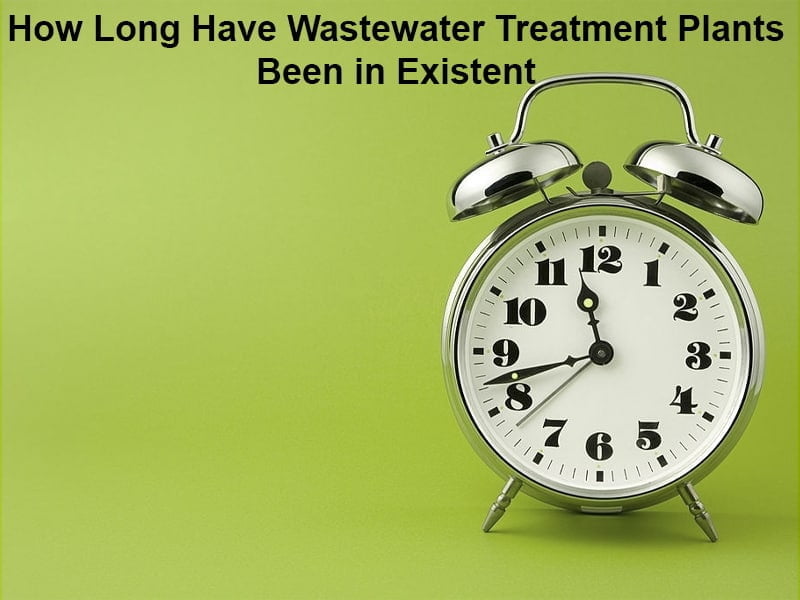Exact Answer: Since 1800s
Wastewater treatment plants help in reclaiming wasted
water which becomes clean for irrigation. However, the reclaimed wastewater is
said to contain more dissolved solids than the natural water. The solid
residues which are obtained from wastewater treatment plant are known as
biosolids.
Biosolids are used as fertilizers since they are rich in micronutrients,
macronutrients as well as organic matter. However, biosolids are linked with
heavy metals which vary from one wastewater treatment plant to the other.

Wastewater treatment plant history
Wastewater treatment plants have been in existence since the late 1800s. Apart from odor, deadly diseases such as cholera lead to the death of thousands in various European cities by the year 1850. The untreated wastewater was later on recognized as the source of the problem, which led many cities to build a sewer system and control water pollution.
After a few decades, wastewater treatment became possible through chemical processes. Sir Edward Frankland came up with the first sewage filtration method where he used gravel to purify separate and neutralize the solids. By the year 1890, there were various wastewater treatment plants across Europe which led to the development of clean and safer cities.

What are the major pollutants found in wastewater?
Before going through the importance of wastewater treatment plants, it is essential to know what the significant pollutants available in wastewater are. Often, wastewater is a byproduct of industrial processes; therefore, contaminants will vary depending on what the water is exposed to. Some of the significant pollutants include;
- Nitrates and phosphates: These are among the major water pollutants. When released into the environment, these compounds tend to increase biochemical oxygen demands. BOD or the biochemical oxygen demand is the amount of oxygen required to break down organic matter.
- Metals: These are found in the water due to industrial processes. When released into the environment, heavy metals have a negative impact on our health and the environment at large.
- Pathogens: Bacteria, fungi, and viruses are among some of the significant microorganisms polluting our water. When untreated wastewater is released into the environment, the chance of developing waterborne illnesses increases.
Importance of wastewater treatment plant
The primary aim of a wastewater treatment plant is removing as many suspended solids as possible before discharging the remaining water to the environment. The solid material uses oxygen to decays which is essential for the plants and animals that live in water.
Wastewater treatment plants have various benefits such as:
- Improves marine life. When wastewater is treated before being released to the environment, it helps in reducing solids which are hazardous to marine life.
- Improves the quality of life. Water is a fantastic playground for us; therefore, treating wastewater before realizing it to major water bodies such as rivers and oceans is essential. These will help in preventing waterborne illnesses.
- Wildlife habitat. As they say, water is life; this is because all living things depend on water for survival. Therefore, releasing treated water into the environment will help in improving thousands of species in our environment.
- Restoration of water supply. There are various areas across our plant with water scarcity; therefore, treating wastewater helps in restoring enough water for agriculture.

Conclusion
Wastewater treatment is essential since it helps in removing up to 60% of suspended solids from wastewater. Furthermore, wastewater treatment has helped improve life and prevent the development of waterborne illnesses such as cholera and typhoid.
References
- https://books.google.com/books?hl=en&lr=&id=RIZHDwAAQBAJ&oi=fnd&pg=PT16&dq=Wastewater+Treatment+Plants&ots=mIN3nzxUlz&sig=u0GBU84VgH_fqDSflR0H3OiLxGM
- https://link.springer.com/article/10.1023/A:1020586312170

This demonstrates the incredible extent of human history!
Yes, it’s a profound picture of human progress.
I agree, it’s fascinating to see human development across centuries.
This information is exceptionally valuable for understanding environmental processes.
Absolutely, these insights are essential for addressing environmental challenges.
The importance of wastewater treatment cannot be overstated, given its impact on human health and the environment.
True, this knowledge is crucial for sustainable living.
The importance of wastewater treatment for marine life can’t be overstated.
Absolutely, this knowledge is vital for environmental conservation.
This is an informative read on the history of wastewater treatment.
Agreed, it’s crucial for understanding modern environmental processes.
The use of biosolids as fertilizers is truly remarkable.
An innovative solution to waste management.
Indeed, it’s an extraordinary example of waste repurposing.
An enlightening read on the history and importance of wastewater treatment.
This is a significant discussion of wastewater treatment’s historical and ecological importance.
An insightful exploration of wastewater treatment’s profound impact.
Absolutely, it’s a reminder of the continuous evolution of environmental practices.
This post provides a comprehensive overview of the value of wastewater treatment.
It’s an enlightening perspective on a critical environmental topic.
The discussion on water pollutants is thought-provoking.
Yes, it’s a reminder of the environmental impact of industrial processes.